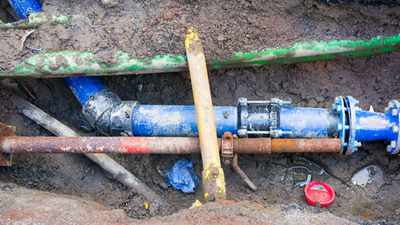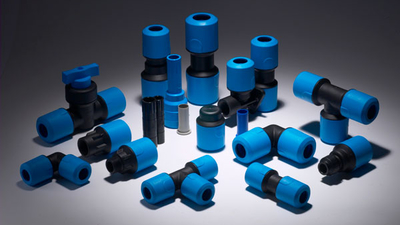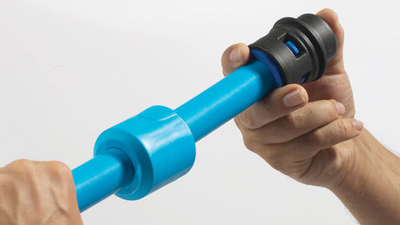Why should plumbing installers use push-fit MDPE fittings?

A leak in the water main is never good news, particularly if it’s underground. For the homeowner, it signals a substantial repair bill. For installers and housing developers, they can cause a heavy backlash and loss of reputation.
Push-fit MDPE fittings, particularly those from the JG Speedfit range, will reduce issues in underground mains water plumbing but they’re often misunderstood. So we’ve produced a handy guide for plumbing installers, why they should use push-fit MDPE fittings, and how important they are.
Connecting water to the mains is no easy task
Fixing pipework underground is not as simple as fixing a leaking tap, and these repairs can be costly and time-consuming. It’s vital for installers who are concerned with the connections between mains and homes to be using the correct pipe and fitting material.
Before we look at why use push-fit MDPE fittings let's have a look at what they are. The most common type of pipe and fitting material now used to connect water mains to homes is MDPE. MDPE stands for medium-density polyethylene, and is a robust, heavy duty material.
MDPE pipes that are used to connect mains water supplies into homes are typically installed in underground trenches dug in virgin ground. Once installed, the trenches are subsequently filled in by heavy machinery. However, the choice made now is critical, but often overlooked. What do you use to connect the pipes – push fit or compression fittings?

How do you solve a problem like compression fittings…
As most installers would be aware, compression fittings need to be able to rotate once they are laid into the ground and buried. They must have a bit of ‘give’ to accommodate the movement when earth is initially laid over, and the settlement and heave that comes later.
The issue with compression fittings is that they do not allow for this movement, and over time, the seal can weaken. Human judgement is integral to these connections as well; it depends on the installer to tighten the fitting to an unspecified torque. As a result, this means they can either be too tight, or conversely, not tight enough.
Compression fittings require a number of components to create a secure connection. For instance, to connect a compression tee you will need, three compression nuts, three seals and three compressive elements, which must be assembled piece by piece onto the pipe.
…with push-fit MDPE fittings instead!
However, push-fit MDPE fittings have built-in seals and the connection can be made by simply pushing the pipe into the fitting. This reduces the chance of exposing the interior of the pipework to contamination.
They’re also much less affected by weather. Rainy weather can make the trenches too muddy for a compression fitting to be installed safely. This also diminishes the chance of exposing the inside of the pipe and fittings to contamination JG Speedfit’s MDPE range comprises of highly engineered collets with stainless-steel teeth that create the most reliable seal in even harsh weather conditions. Like other JG Speedfit ranges, no specialist tools are required, and the fittings are fully demountable. This makes them extremely quick and easy to use in tight and awkward spaces.

Push-fit MDPE fittings provide peace of mind
Perhaps the best reason for why use push-fit MDPE fittings is that underground leaks can be very troublesome. Ground needs to be dug up to identify a problem involving specialist machinery. Push-fit MDPE fittings assures a reliable and leak-proof seal, and with the JG Speedfit range, the installation is right first time.
Make sure to double check if the push-fit MDPE fittings are manufactured to strict British standards and are WRAS approved. This guarantees they are tested and constructed to the highest quality.
Discover more
Check out our full range of hardwearing and easy to install MDPE fittings for cold water mains.

